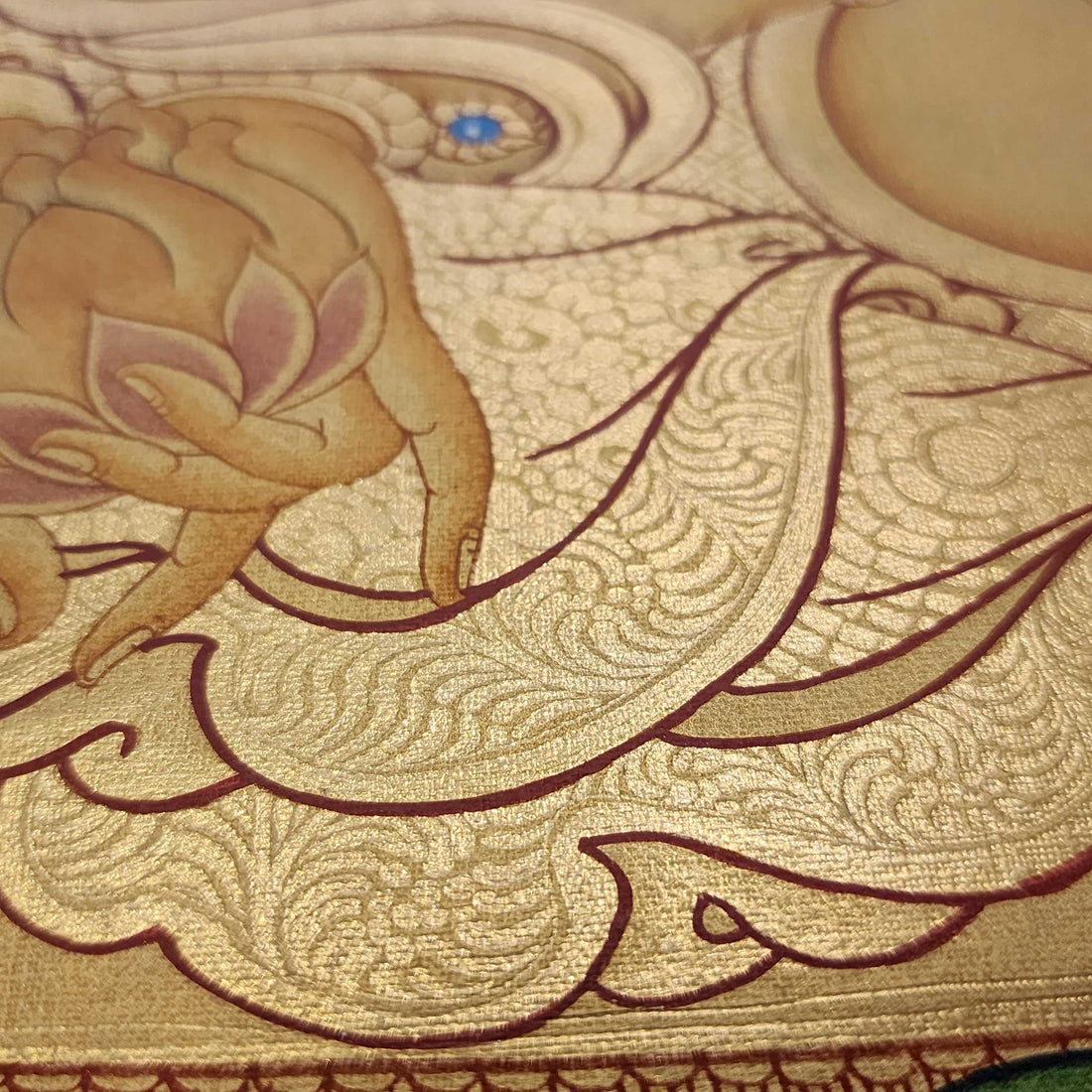
The Symbolism of the Parasol in Thangka Art
Share
Introduction
The Parasol (Chatra) is one of the Eight Auspicious Symbols in Buddhism. In Thangka art, it represents protection, spiritual authority, and the blessings of the Dharma that shield beings from suffering.
Meaning of the Parasol
— Symbolizes protection from harmful forces, both physical and spiritual.
— Represents the cool shade of compassion shielding practitioners from suffering.
Structure and Symbolism
— The Canopy: Signifies protection from ignorance, fear, and obstacles.
— The Pole: Represents the central axis of truth and wisdom.
— Ornamentation: Often decorated with jewels, showing spiritual wealth.
Placement in Thangka Art
— Commonly seen above Buddhas and deities as a sign of honor and reverence.
— Sometimes included among the Eight Auspicious Symbols in offerings.
Spiritual Symbolism
— Reminds practitioners of the refuge provided by Buddha, Dharma, and Sangha.
— Suggests spiritual sovereignty and the authority of enlightened wisdom.
Cultural and Ritual Use
— Large ceremonial parasols are used in monasteries during festivals.
— They are carried in processions, symbolizing respect and protection for sacred objects.
Conclusion
In Thangka art, the Parasol is more than a decorative symbol. it is a reminder of the protection and blessings of the Dharma. It inspires practitioners to seek refuge in wisdom and compassion.
